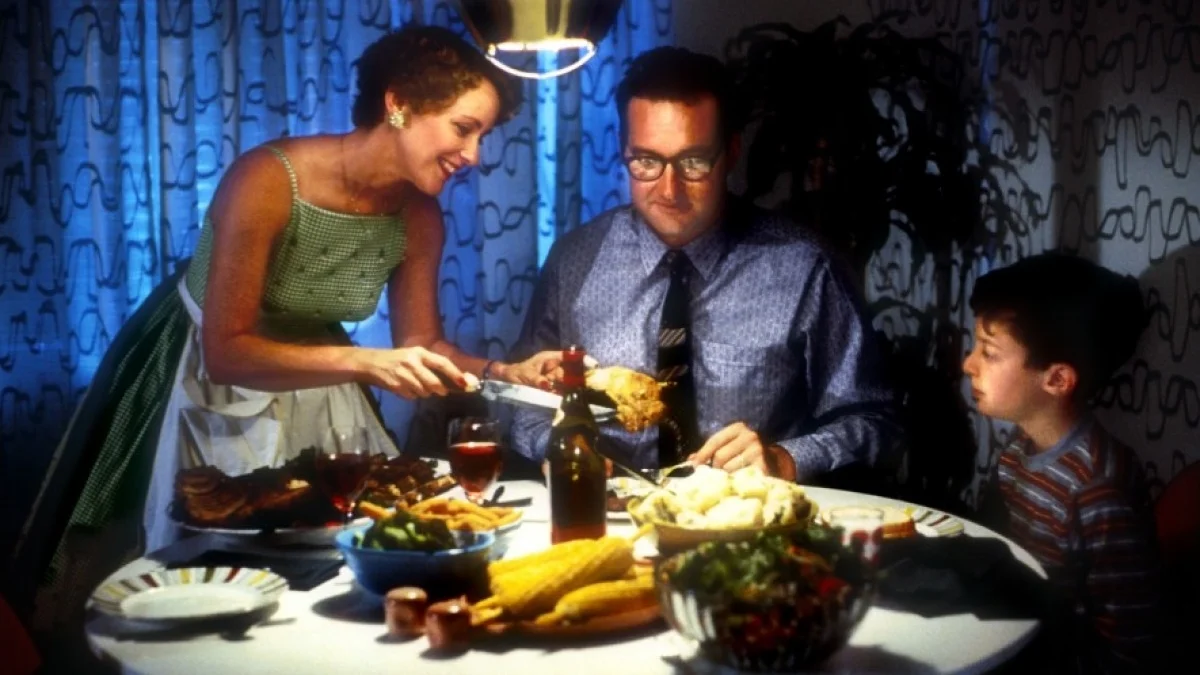The King Of Summer: Cujo (1983)
“Nope, nothing wrong here.”
Prolific author Stephen King rose to fame and prominence in the 1970s with his trifecta of horror classics Carrie, ‘Salem’s Lot, and The Shining. From that beginning the sky was the limit and over the years he’s written more than his fair share of classics - books that you’re likely to find in the house of almost any horror fan. He’s one of the most famous authors in the world, and for good reason, hype and praise aside, he simply is one of the best, able to weave a tale of terror like few others of his generation. In 1981 he released Cujo, his first novel to deal with a non-human monster, in this case a rabid Saint Bernard named Cujo.
As usual, Hollywood was hot to acquire the rights to the novel and they were scooped up by Warner Bros. in short order. Directed by Lewis Teague (Alligator) and featuring a cast that included perennial 80s mom Dee Wallace and a young Danny Pintauro (Who’s The Boss?), Warner Bros. had assembled a crack team that would be able to bring King’s terrifying novel to big screen and haunt audiences for years to come.
Cujo begins like most King stories, with the inhabitants of a small Maine town living their lives oblivious to the danger lurking right in front of them. Much like in the novel, we get some great slices of life and a bunch of seemingly insignificant characters are brought to our attention including a mailman and any number of decent folks just trying to make a living. It's here that we meet the Camber family who live on the outskirts of town with their lovable dog Cujo. He's like any other big adorable dog; playing fetch, obeying his masters, and chasing rabbits. This is where the horror comes in as Cujo chases a rabbit into a cave filled to the brim with sleeping vampire bats. The dog’s bark awakens these sleeping terrors and they attack and bite him with reckless abandon. They infect him with a strain of rabies that starts to turn this 10/10 Good Boy into a very Bad Dog.
No stranger to creature features, director Lewis Teague caught the eye of the producers with his exceptional monster flick Alligator from 1980. That picture was essentially a Jaws knock-off but it was also one of the best - featuring Robert Forster (Jackie Brown, Medium Cool) and some stellar effects work, Teague had proven he could handle animal effects and get some terrific performances in the process. With Cujo he was able to prove them right by getting gut-wrenching performances by Dee Wallace and Pintauro. Fans all know how great Wallace can be, usually rising above the material to give one of those top-tier performances that always gets pushed aside come Awards season for some more prestigious affair, but it’s Pintauro who truly knocks it out of the park. Given the role of a regular kid in a not so regular situation, the terror is palpable with every scream, every attack, and every near death incident.
The transformation of Cujo from cute and lovable dog into a bloodthirsty killing machine is a work of movie magic. Using a mixture of makeup, animatronics, and a man in a dog costume, Cujo is absolutely terrifying. With some smart cinematography and efficient editing, the effects look real and that’s what adds to the horror. Audiences believe that Cujo is a monster because of all of this cinematic trickery and the film is better for it. Over the years, Cujo has amassed something of a cult following with its fans praising it as one of the better King adaptations and I would have to agree.
King’s novel is a personal favorite of mine and it’s a picture that I’d avoided for years in fear that the film would tarnish my love for the book. After watching it about ten years ago I was pleasantly surprised to find that not only had Teague made a terrific King adaptation, he’d actually improved on several aspects of the book. The novel’s ending is a dark and depressing affair that culminates in a heartbreaking death whereas the film’s ending although a “Hollywood ending” works better from a cinematic standpoint and most certainly better for the audience's state of mind.
This truly is one of the better King adaptations thanks to the filmmakers behind it. Putting the audience into the hot car during the second half of the film, causes a sense of claustrophobia that few other horror films can match. Add in those great performances by Wallace and Pintauro and not only do you have a great horror movie, you simply have a great film regardless of genre.
















